
Dirt embedded in tiny pores make the skin look dirty, but the clogs, also known as comedones, aren't actually dirt -- they are a combination of oil, dead skin cells and bacteria. If the substance hardens, the pores become larger and the clogs may eventually turn into blackheads. Proper washing is the first and most important step, but removing embedded dirt from your pores may require extra help in the form in deep cleansing and even medicated skin-care products.
Step 1
Cleanse your face in the morning and before bed, using a mild, fragrance-free cleanser that is well-suited to your skin type. Massage the cleanser gently into your face for at least 30 seconds, then rinse with cool water. Don't scrub -- agitating your skin may stimulate production of more oil.
Step 2
Massage your skin in gentle, circular motions every time you shower, using a gentle mesh puff or soft washcloth. If the dark pores are still visible after this mild exfoliation, or if your skin is oily, use an over-the-counter exfoliating scrub containing benzoyl peroxide, alpha-hydroxy acid or salicylic acid two or three times per week. If your skin is sensitive, look for a non-abrasive exfoliating product.
Step 3
Deep clean your pores once or twice every week with a clay-based facial mask, such as a product containing Fuller's earth. Smooth the mask over problem areas, then let the mask dry thoroughly before rinsing.
Step 4
Avoid oil-based makeup, cleansers and moisturizers. Look for water-based or non-comedogenic products, which won't block your pores. Similarly, avoid products containing petroleum or mineral oil.
Related Articles
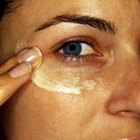
The Best Facial Moisturizer That Won't ...

Yogurt Face Mask for Acne

Are There Ways to Get Rid of Blocked ...

How to Heal an Inflamed Bikini Area

Help With Chapped Red Cheeks

The Best Ways to Get Dead Skin Off of ...

How to Use Vaseline as a Moisturizer ...

Can the Neck Be Exfoliated?
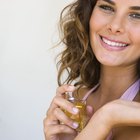
How to Remove the Smell of Cologne From ...

Help for Red Marks After Facials

How to Use Clearasil

How to Reduce Redness

How to Get Lighter Skin Without ...

How to Maintain Good Skin After Accutane

How to Get Rid of Irritation From ...

How to Mix Bronzer With Moisturizer

How to Have Nice Knees
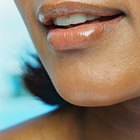
How to Fix an Irritated Upper Lip After ...
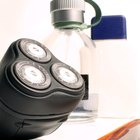
How to Get Rid of Aftershave Allergies
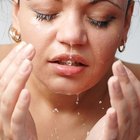
How to Repair Open Pores
References
Writer Bio
M.H. Dyer began her writing career as a staff writer at a community newspaper and is now a full-time commercial writer. She writes about a variety of topics, with a focus on sustainable, pesticide- and herbicide-free gardening. She is an Oregon State University Master Gardener and Master Naturalist and holds a Master of Fine Arts in creative nonfiction writing.
Photo Credits
Hemera Technologies/AbleStock.com/Getty Images